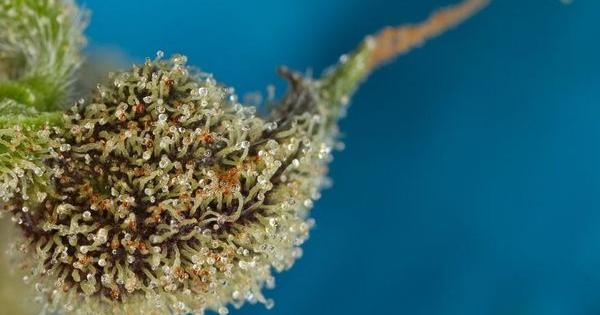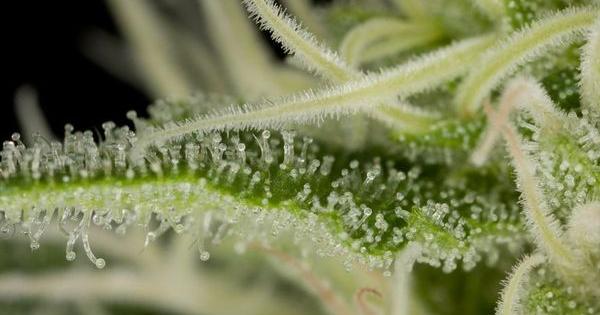- Cannabis contains 113 active compounds known as cannabinoids. CBD (cannabidiol) is the most abundant together with THC, but unlike this, it does not have any psychoactive properties, meaning it won’t get you high.
- CBD has in fact been found to counter the psychoactive effects of THC, including the anxiety associated with over-consumption.
- Moreover, CBD provides a wealth of health benefits through its interaction with the endocannabinoid system, a complex network of cell receptors and neurotransmitters that help maintain the body’s homeostasis.

Endocannabinoid systems exist in mammals, reptiles, birds, fish, and possibly, some invertebrates. Composed of cannabinoid receptors that are found throughout the body, with greatest concentrations in the central and peripheral nervous system and in the immune system, the endocannabinoid system is responsible for controlling a variety of bodily functions, including sleep, mood, temperature, immune response, perception of pain and pleasure, fertility, memory and appetite.
Whenever a health problem arises, the endocannabinoid system releases natural cannabinoids (endocannabinoids) in order to restore balance in the body. In some cases, however, the endocannabinoid system can't solve the problem on its own, which can lead to a number of chronic conditions.
How does the endocannabinoid system work?
Contrary to most bodily systems including the digestive and nervous systems, the endocannabinoid system was discovered only recently, in the early 1990s. A decade earlier, in the 1980s, the Ronald Reagan administration had invested tens of millions in studies aimed at proving that cannabis can cause brain damage and cognitive impairment. Unsurprisingly, this politically biased assumption was never confirmed, but instead the researchers involved in the project came across the endocannabinoid system.
The discovery is so new that it was named after the cannabis plant. The reason for this is because the cannabinoids that make up the endocannabinoid system are very similar to the cannabinoids that are found in hemp, cannabis and other subspecies of the plant.
The uniqueness of the endocannabinoid system lies in its main function. Contrary to other bodily systems, which focus on specific functions like digestion, the endocannabinoid system works to keep the balance between the remaining systems so that they can function optimally. This is known as homeostasis, a stable equilibrium within the body where everything works smoothly regardless of external conditions.
To take one example, the endocannabinoid system will keep heartbeat and body temperature within a set range regardless of whether it's cold or hot, or whether you're doing sport. Thus, if external conditions change – let's say that temperature rises – the endocannabinoid system will force the body to sweat helping it cool down. This state of equilibrium greatly contributes to a healthy body, which is largely achieved through the collaboration between the endocannabinoid system and the various systems in the body.
The three main components of the endocannabinoid system
- Endocannabinoids: Endocannabinoids are similar to the chemical compounds that are found in cannabis, such as CBD and THC, which are known as phytocannabinoids – "phyto" means "plant" in Greek. The prefix "endo", instead, means "endogenous", referring to the fact that the cannabinoids are produced in the body. So far, two main endocannabinoids have been identified: anandamide and 2-AG.
- Cannabinoid receptors: Cannabinoid receptors are found on the surface of cells in the nervous system and other organs. Just like the external cannabinoids contained in cannabis, endocannabinoids have the ability to bind to cannabinoid receptors, which allows them to communicate with a number of bodily systems, resorting balance where required. The two main types of cannabinoid receptors in the body are known as CB1 and CB2.
- Enzymes: Once the endocannabinoids have bound to the cannabinoid receptors and served their purpose, the enzymes in the endocannabinoid system work to break them down in order to prevent excessive build up. Each of the two main endocannabinoids is associated with a degrading enzyme: Anandamide with FAAH (fatty acid amide hydrolase) and 2-AG with MAGL (monoacylglycerol lipase).
Which bodily functions are regulated by the endocannabinoid system?
In the example before, we looked at overheating during sport, but there are a number of other bodily functions that benefit from working within a healthy range of values. Some of the functions that are regulated by the endocannabinoid system include:
- Appetite and digestion
- Temperature
- Immune function
- Inflammation
- Motor control
- Mood
- Memory
- Sleep
- Response to pain and pleasure
These functions are regulated by the endocannabinoid system through communication between the cannabinoid receptors and the nervous, digestive and immune systems. Although there are others, so far research has focused on two cannabinoid receptors:
- CB1 receptors, which are found in the central nervous system – brain and spinal cord nerves
- CB2 receptors, which are found in the peripheral nervous system – the nerves in the rest of the body which allow the brain to communicate with different body areas – and in the digestive and immune systems
Because cannabinoid receptors are found throughout the body, the endocannabinoid system can address imbalance in the various bodily systems with a high degree of accuracy. Thus, if a swollen area is detected, it can focus on the affected area without interfering with other systems, which could lead to uncontrolled reactions.
How does CBD affect the endocannabinoid system?
Thanks to the endocannabinoid system, the cannabinoids that are found naturally in cannabis, notably CBD and THC, can bind to cannabinoid receptors and modulate physiological functions in the same way as endocannabinoids. These two cannabinoids, however, have very different ways of interacting:
- Just like the endocannabinoid anandamide, THC binds to CB1 receptors in the brain, with the difference that while anandamide has a calming effect on the brain, THC is psychoactive. FAAH enzymes have the ability to degrade anandamide but are not as effective against THC, which is why the "high" lasts longer.
- CBD, in turn, binds both to CB1 receptors in the brain and to CB2 receptors throughout the body, as a result of which it can benefit the whole body, alleviating mental conditions such as anxiety, as well as physical ailments including muscle spasms, pain and swelling.
The indirect effects of CBD on the endocannabinoid system
Besides receptors, CBD interacts with the endocannabinoid system by modifying the activity of its transport proteins and enzymes, which in turn modify the concentration of anandamide, the body's "default" endocannabinoid.
When describing the endocannabinoid system, there is a tendency to forget that besides receptors and neurotransmitters, regulating enzymes play also a big part in its functioning. In this case, the key enzyme is the above-mentioned FAAH, which degrades anandamide in a process of which CBD is an inhibitor.
Put another way, cannabidiol reduces the action of the enzyme responsible for degrading anandamide, which leads to a higher concentration of the endocannabinoid in the system. And since anandamide has a calming effect on the brain, by blocking the FAAH enzyme, CBD can be of help in treating anxiety disorders.

Rather than having a direct effect, CBD potentiates the effects of the natural elements in the endocannabinoid system. That said, it has been found that CBD is actually quite a weak inhibitor of FAAH enzymes, meaning its effects cannot be entirely, or even largely, attributed to its interaction with enzymes.
In fact, CBD plays a part in 60 different molecular pathways involving serotonin receptors, immune system receptors and TRP receptors (cell sensors that detect changes in the environment), among others. Highly versatile, the countless health-conscious consumers that use CBD regularly are proof of its usefulness.
In any case, the magnitude of the effects of CBD can be explained by its interaction with the endocannabinoid system only to some extent. As a rule, the action of CBD is mostly indirect, its main function being potentiating the effects of anandamide, the neurotransmitter occurring naturally in the endocannabinoid system.
Therefore, in order to fully understand cannabidiol's full spectrum of effects, we need to look beyond the endocannabinoid system and explore how CBD interacts with the remaining systems in the body.









Comments from our readers
There are no comments yet. Would you like to be the first?
Leave a comment!Did you like this post?
Your opinion about our seeds is very important to us and can help other users a lot (your email address won't be made public).